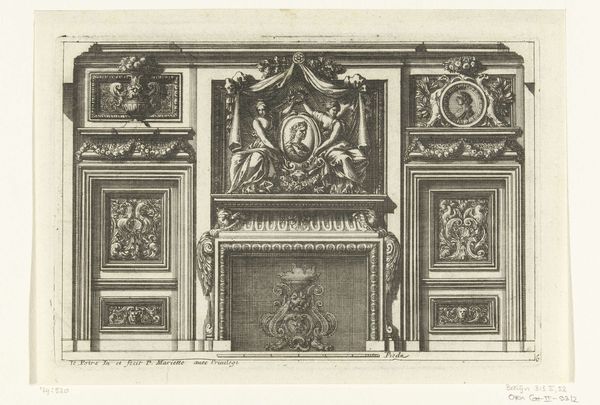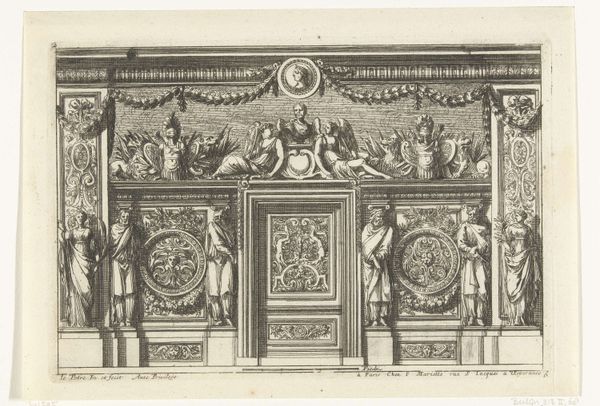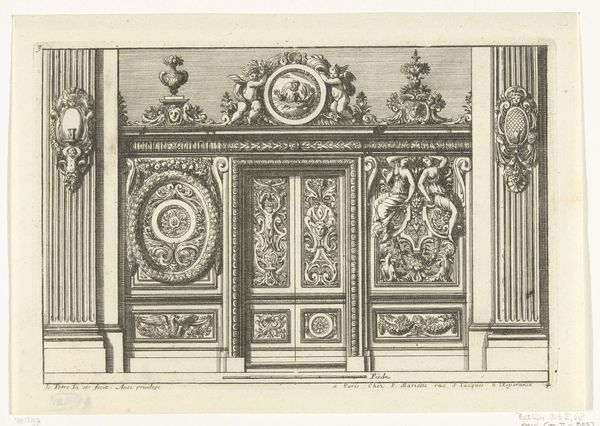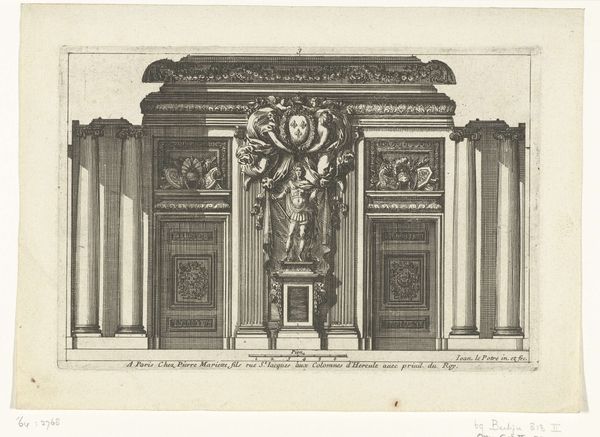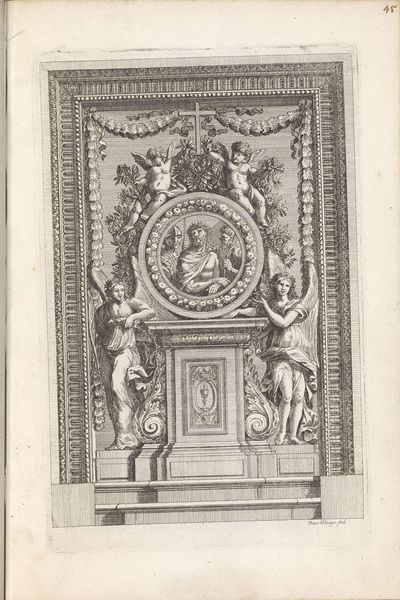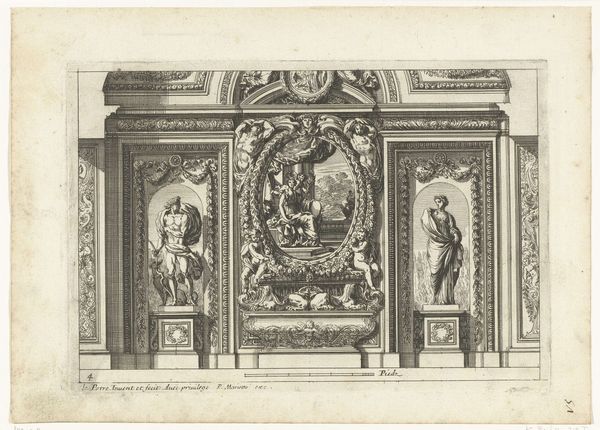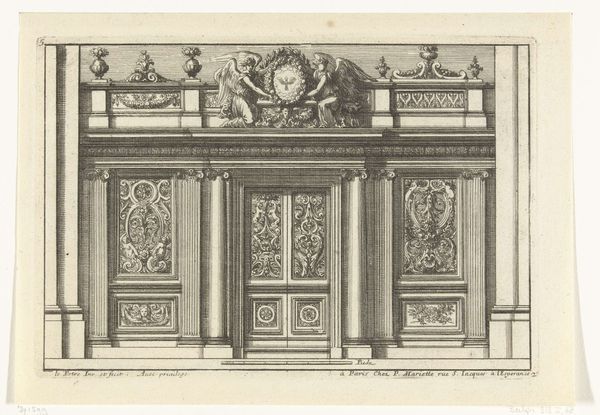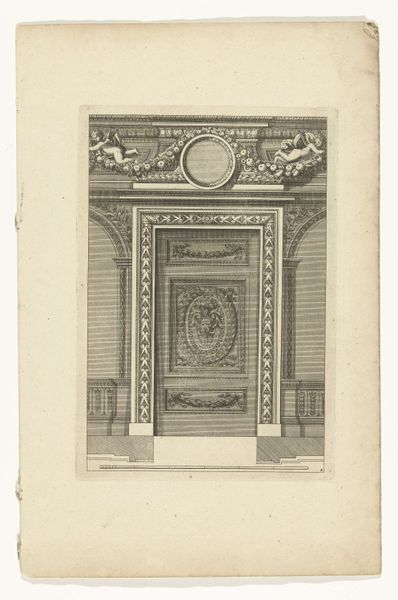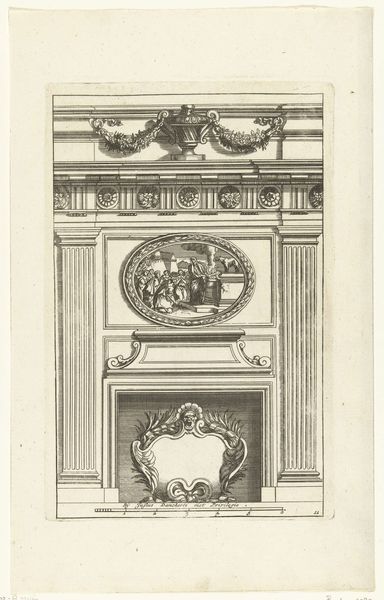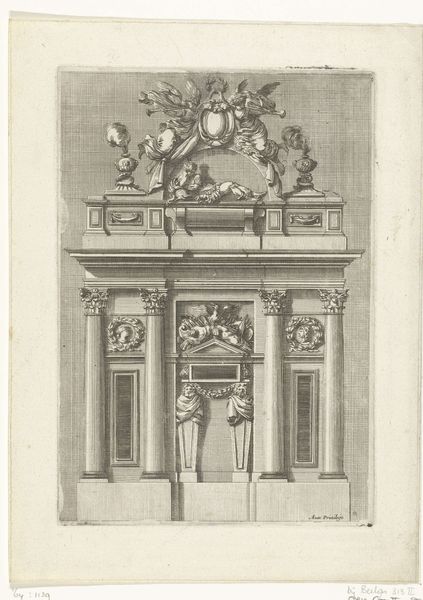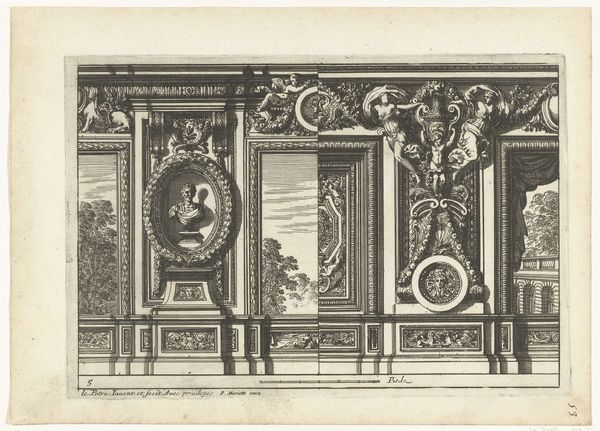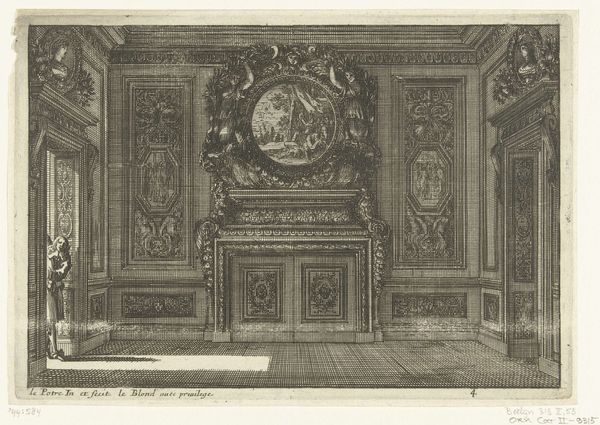
drawing, print, intaglio, engraving, architecture
#
drawing
#
baroque
# print
#
intaglio
#
decorative-art
#
engraving
#
architecture
Dimensions: height 147 mm, width 208 mm
Copyright: Rijks Museum: Open Domain
Curator: Here we have an engraving, dating from about 1655 to 1657. It is a work by Jean Lepautre, known as "Alkoof met houten lambrisering," and it’s held here at the Rijksmuseum. It exemplifies the decorative trends in architecture during the Baroque period. Editor: The meticulous detail! It's stunning. But also... it’s intensely ornate. A little overwhelming. Is this kind of lavish design indicative of anything deeper? Curator: Absolutely. Consider the political climate. France was consolidating power under Louis XIV. Lepautre's designs, popularized through prints like this, showcased French artistic innovation. It subtly reinforced cultural authority through aesthetics, promoting a lifestyle only accessible to elites. Editor: So, it's a form of visual propaganda, projecting wealth and control? I wonder how this kind of opulent design resonated—or perhaps jarred—with the majority of the population living in vastly different conditions. What were the spaces in which this engraving circulated, what did its beholders feel? Curator: That's a valid question, considering socio-economic disparities of the time. This wasn’t designed for widespread distribution among the masses. Primarily it served as inspiration and aspirational material for architects and wealthy patrons aiming to build or decorate private spaces and royal properties. Think of it as an early design catalog or mood board. Editor: A catalog reinforcing societal structures, then. Did these elaborate designs reflect back onto constructions of identity? The centrality of mythological figures, like the bust framed above the wall paneling—how does that bolster ideas of legacy, pedigree, power? Curator: Definitely. Notice how this print translates luxury. The cherubs, wreaths, central medallion, all contributed to an aesthetic that intertwined divinity, classical heritage, and raw power. Editor: The medium itself interests me. A print, replicated over and over. Who could consume it? I understand its intent toward architecture but beyond architects, to what class did its appeal extend? Did it encourage design imitation for a growing bourgeoisie? Did these Baroque ideals affect them too? Curator: That's precisely what happened; elements, perhaps not the full alcove, permeated broader society through simplified iterations. Baroque never truly disappears—we find echoes in decorative choices reflecting desires for grandeur. This piece provides us insight to how cultural norms are distributed through images. Editor: Reflecting on this piece, it’s remarkable how a seemingly simple architectural study reveals complexities about societal power structures and aspirational aesthetics. Curator: Exactly. Lepautre's rendering reminds us that design is never politically neutral, especially when viewed through socio-historical lenses.
Comments
No comments
Be the first to comment and join the conversation on the ultimate creative platform.
